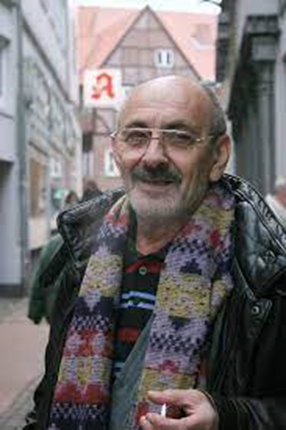YOYSEF BREGMAN (1882-1978)
He was a current events writer, historian, and community leader, born in Pinsk. He graduated from a secondary school. He was expelled from the Kiev Polytechnic Institute for participating in a student demonstration against the government. In 1903 he was arrested, and in 1908 he was banished from the country. He took part in 1908 in the Czernowitz Yiddish Language Conference, and from that point on he became a passionate Yiddishist. After returning to Russia, he joined in the organizing of Kletskin Publishers and became its manager. He was also the organizer and one of the founders of the journal Di yidishe velt (The Jewish world) in Vilna. In Soviet times, initially, in Kiev he served as manager of the Jewish section at the Ukrainian Theatrical Academy, director of the first Yiddish State Theater; and from 1926, in Moscow he worked as manager of the central bureau of the Jewish section at the Central Committee of the Communist Party. He worked abroad as well—in the system of the People’s Commissariat for Foreign Trade, and there he supported Yiddish writers and artists who emigrated to Germany and France. At that time the artist Yisokher-Ber Ribak painted Bregman’s portrait. After returning to Moscow, Bregman was a leader in “Gezerd” (All-Union Association for the Agricultural Settlement of Jewish Workers in the USSR), “Komerd” (Commission for the Settlement of Jewish Workers on the Land), and a contributing member of the journal Tribuna (Tribune) which often published his articles dedicated to Jewish integration on the land. The last three decades of his life, he devoted to studying the Jewish labor movement, the Bund within it, and he compiled an immense file on this topic, as well as a file and catalogue on Jews who participated in the revolutionary movement, Jews who took part in the Revolution and civil war, and Jews who were heroes of the Soviet Union, among others. After his death (in Moscow), a huge archive was left with his family.
Chaim Beider, Leksikon
fun yidishe shrayber in ratn-farband (Biographical dictionary of Yiddish
writers in the Soviet Union), ed. Boris Sandler and Gennady Estraikh (New York:
Congress for Jewish Culture, Inc., 2011), pp. 63-64.
